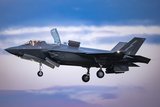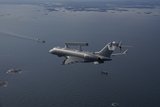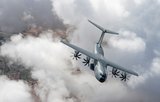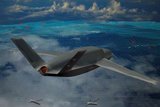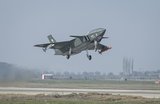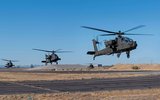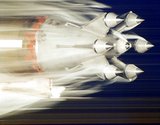Paraguayan Air Force receives four A-29 Super Tucano aircraft
Paraguay ordered six A-29 Super Tucano aircraft at the Farnborough Air Show in 2024. (Photo: Embraer)
The Paraguayan Air Force has received four out of its six ordered A-29 Super Tucano aircraft from Embraer.
The aircraft were delivered during a ceremony at the Silvio Pettirossi Air Force Base near the country’s capital, Asunción.
According to Air General Júlio Fullaondo, Commander of the Paraguayan Air Force, the aircraft will help to modernise the country’s air force and increase effectiveness with airspace surveillance missions.
“This addition to our aircraft fleet represents the most important defence acquisition in the last 38 years … It should be emphasised that these actions should not be considered an expense, but an investment
Already have an account? Log in
Want to keep reading this article?
More from Air Warfare
-
![November Drone Digest: GA-ASI eyes Middle East for Gambit, Edge Group unveils new UAVs]()
November Drone Digest: GA-ASI eyes Middle East for Gambit, Edge Group unveils new UAVs
In November 2025, GA-ASI unveiled a new Gambit variant, the Gambit 6, and appears to be pitching the aircraft series to various customers in the Middle East, which is a fast-emerging CCA market. The Dubai Airshow also saw the unveiling of various Emirati aircraft from Edge Group.
-
![Baykar’s Kizilelma drone makes progress with first air-to-air kill]()
Baykar’s Kizilelma drone makes progress with first air-to-air kill
This test is the latest milestone achieved by the indigenous drone, destroying a target using a beyond-visual-range missile.
-
![Lockheed plans further solid rocket motor investment in Europe and Middle East]()
Lockheed plans further solid rocket motor investment in Europe and Middle East
The company has worked to heavily invest in its solid rocket motor production capabilities, both in the US and internationally, to build a strong supply chain to meet growing demand.
-
![Boeing to build Apache AH-64E attack helicopters for Poland, Egypt and Kuwait]()
Boeing to build Apache AH-64E attack helicopters for Poland, Egypt and Kuwait
The $4.7 billion international order for the three countries will see production conclude around May 2032.
-
![How the US Air Force plans to use data analytics to enhance the roles of airmen and assets]()
How the US Air Force plans to use data analytics to enhance the roles of airmen and assets
The USAF has allocated nearly US$500 million to further the deployment of this type of technology in FY2026. It envisions using analytics to enhance sensors, weapons, missiles and human performance.
-
![GKN Aerospace to fly new UAV demonstrator by 2027]()
GKN Aerospace to fly new UAV demonstrator by 2027
The company plans to develop a cost-effective jet-engine drone, going from concept to a flight-tested demonstrator in 18 months.







